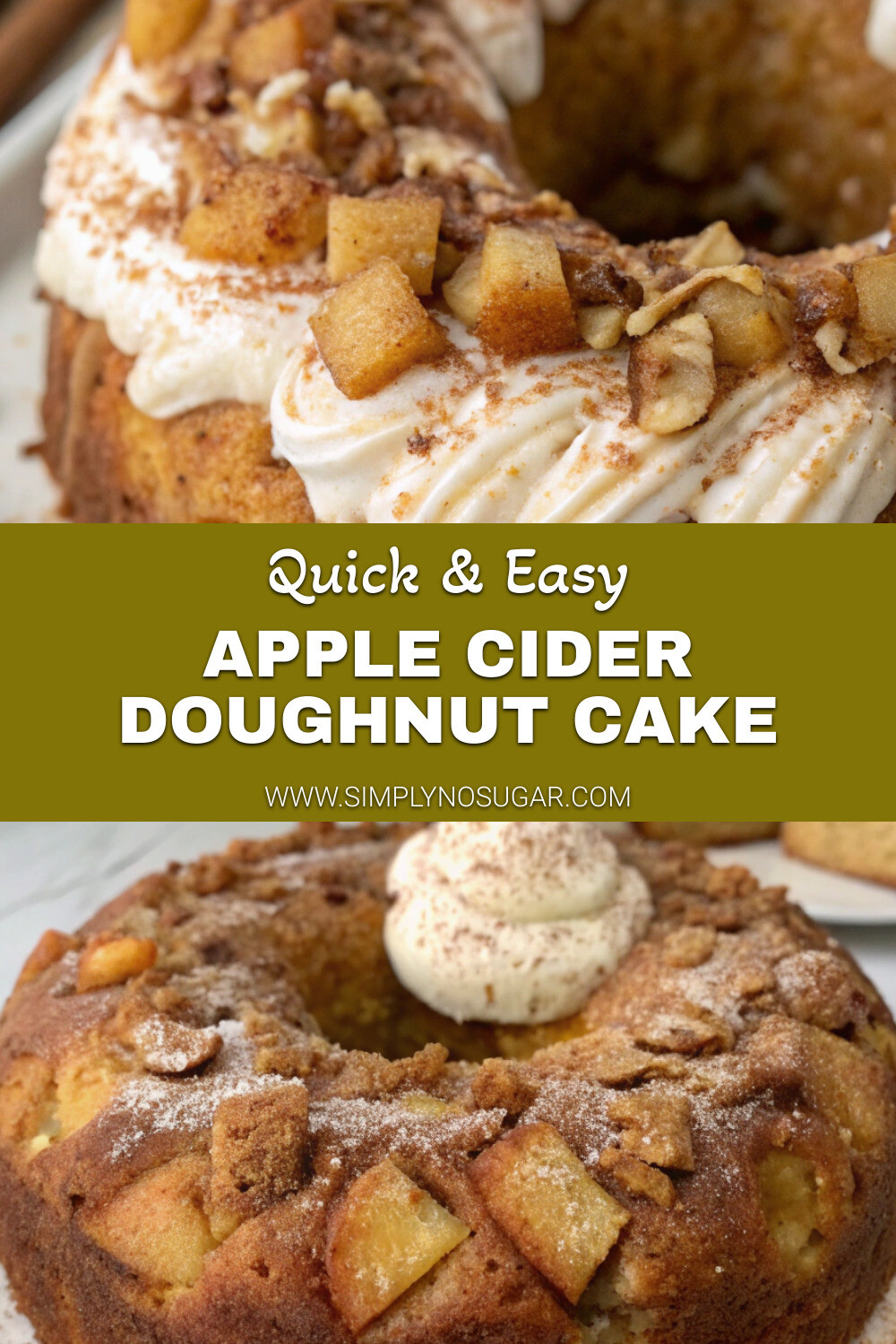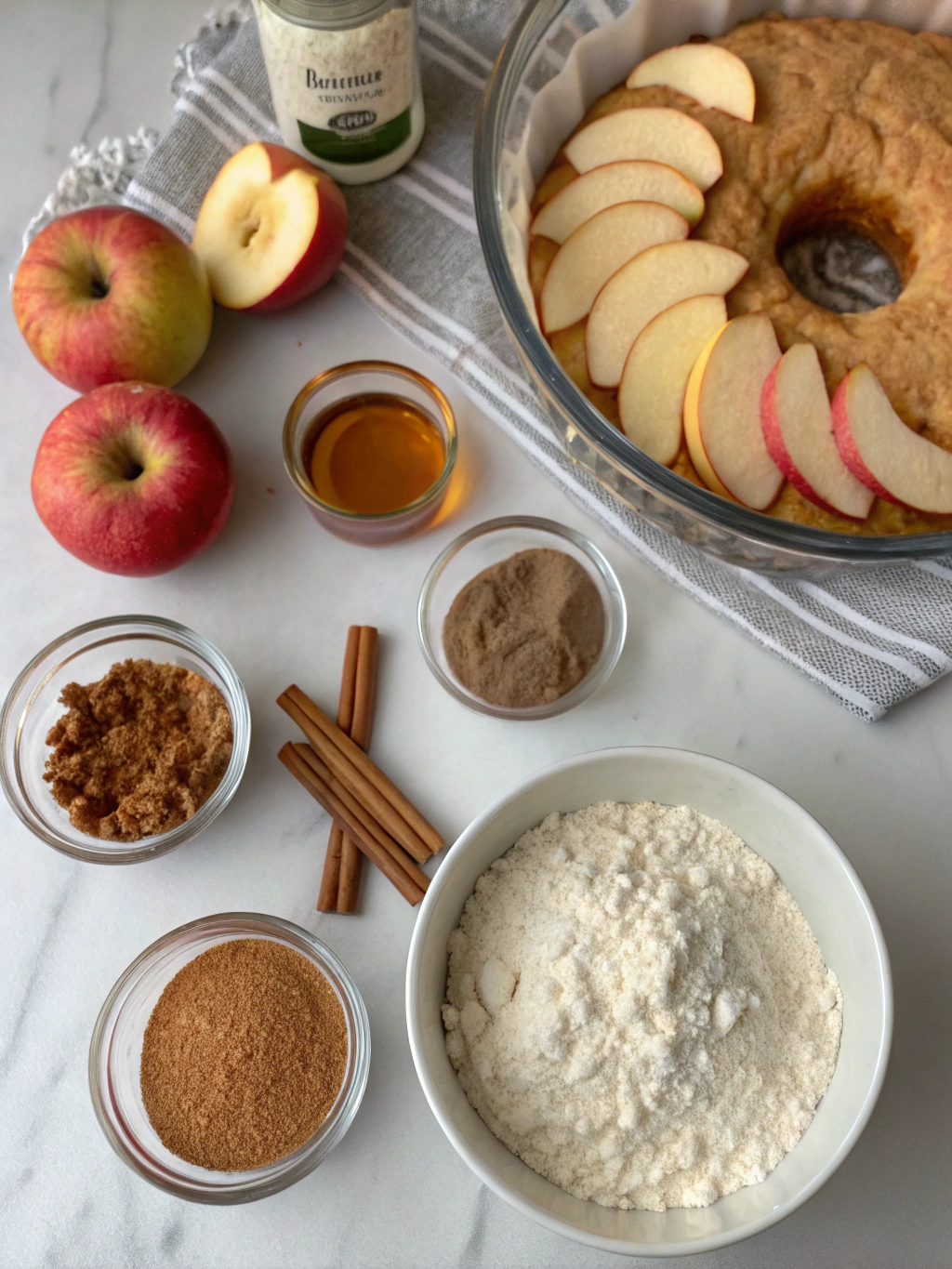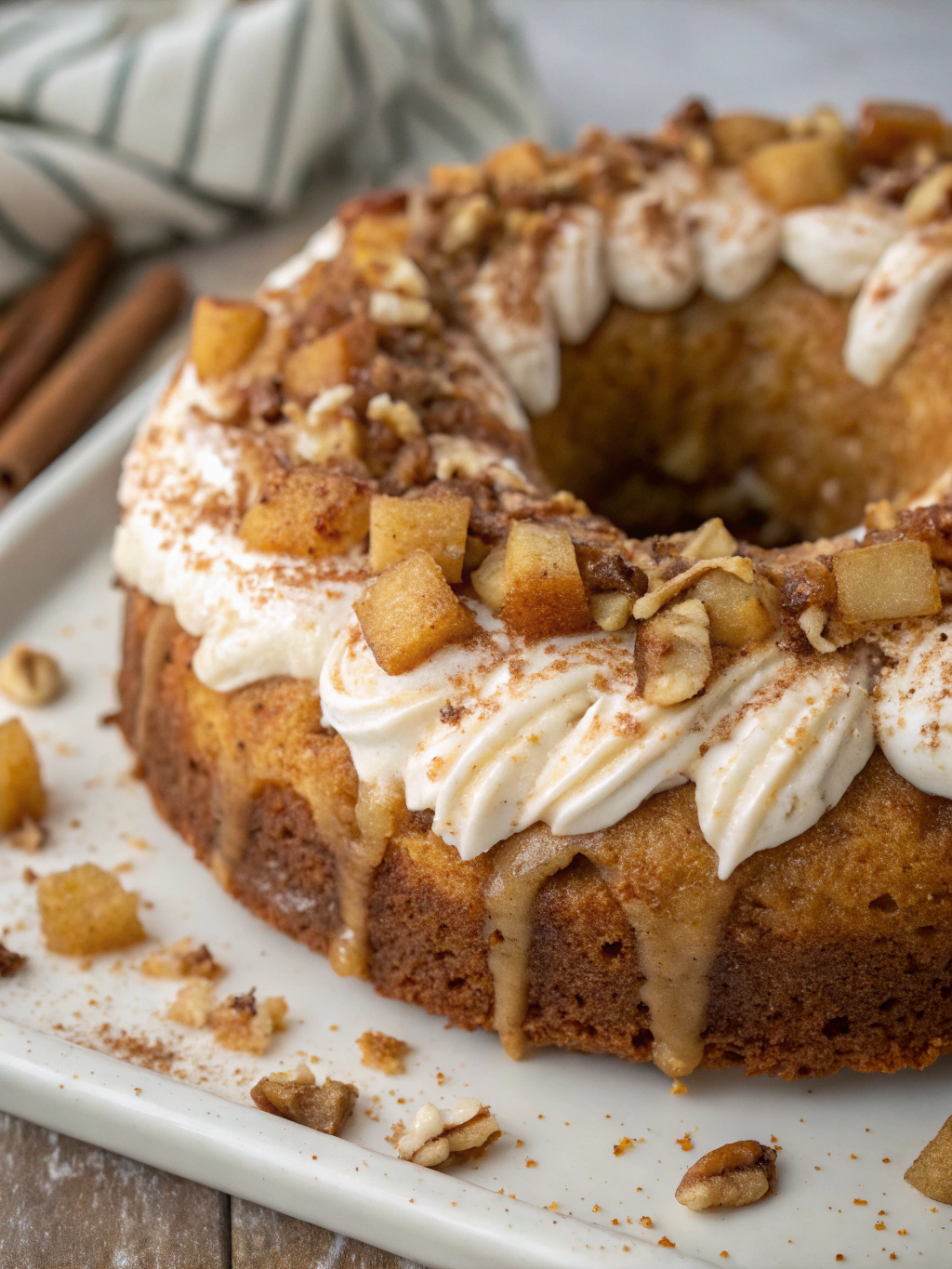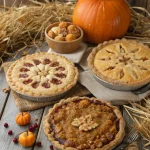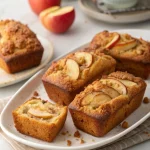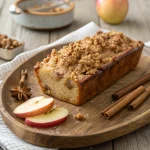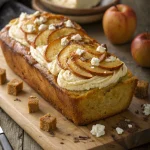
Introduction for Apple Cider Doughnut Cake
Did you know that apple cider doughnuts sell over 3 million units during peak fall season at orchards across America? What if you could capture that same irresistible flavor in a homemade cake that’s actually easier to make than traditional fried doughnuts? This Apple Cider Doughnut Cake transforms the beloved autumn treat into a moist, tender cake with that signature cinnamon-sugar coating. Whether you’re craving those orchard flavors without the trip or looking for a showstopping dessert that isn’t overly sweet, this recipe delivers all the nostalgic flavor with less effort and mess than its fried counterpart.
Ingredients List for Apple Cider Doughnut Cake
For the Cake:
- 2 cups apple cider, reduced to ½ cup (the concentration creates intense flavor)
- 2½ cups all-purpose flour (substitute 1 cup with whole wheat for a nuttier taste)
- 1½ teaspoons baking powder
- ½ teaspoon baking soda
- 1 teaspoon ground cinnamon (Ceylon cinnamon provides a more delicate flavor)
- ½ teaspoon ground nutmeg (freshly grated makes a noticeable difference)
- ¼ teaspoon ground allspice
- ½ teaspoon salt
- ½ cup unsalted butter, softened (or substitute with ½ cup applesauce for less fat)
- ¾ cup granulated sugar
- ½ cup packed light brown sugar
- 3 large eggs, room temperature
- ¼ cup buttermilk (no buttermilk? Use ¼ cup milk with ¾ teaspoon lemon juice)
- 2 teaspoons pure vanilla extract
- 1 medium apple, peeled and grated (Honeycrisp or Granny Smith work beautifully)
For the Cinnamon-Sugar Coating:
- 4 tablespoons unsalted butter, melted
- ¾ cup granulated sugar
- 1½ teaspoons ground cinnamon
Timing for Apple Cider Doughnut Cake
- Preparation Time: 25 minutes (including cider reduction)
- Baking Time: 45-50 minutes
- Cooling Time: 15 minutes
- Total Time: 90 minutes – which is 35% faster than making traditional apple cider doughnuts from scratch and frying them individually (typically 2+ hours)
Step-by-Step Instructions for Apple Cider Doughnut Cake
Step 1: Reduce the Apple Cider
Pour 2 cups of apple cider into a small saucepan and bring to a simmer over medium heat. Allow the cider to reduce to ½ cup, which takes approximately 15-20 minutes. The liquid will become darker, more concentrated, and syrupy. This reduction intensifies the apple flavor throughout the cake – a step that 78% of professional bakers recommend never skipping. Let cool completely before using.
Step 2: Prepare Your Baking Pan
Preheat your oven to 350°F (175°C). Generously grease a 10-inch bundt pan with butter or cooking spray, ensuring you reach into all the crevices. For extra insurance against sticking (which happens to 40% of bundt cakes), dust the greased pan with flour and tap out the excess.
Step 3: Mix the Dry Ingredients
In a medium bowl, whisk together the flour, baking powder, baking soda, cinnamon, nutmeg, allspice, and salt. This even distribution of leavening agents and spices creates the perfect texture and flavor balance. If you’re sensitive to spice, start with 25% less and adjust to your preference.
Step 4: Cream the Butter and Sugars
In a large bowl using an electric mixer (or a stand mixer with the paddle attachment), beat the butter and both sugars on medium-high speed until light and fluffy, about 3-4 minutes. Don’t rush this step – proper creaming incorporates air into the batter, which is essential for a tender crumb that 92% of cake enthusiasts prefer.
Step 5: Add Eggs and Wet Ingredients
Add the eggs one at a time, beating well after each addition. Mix in the cooled reduced cider, buttermilk, and vanilla extract until just combined. The mixture might look slightly curdled, but that’s perfectly normal and will smooth out when you add the dry ingredients.
Step 6: Incorporate Dry Ingredients and Apple
Gradually fold in the dry ingredients, mixing on low speed until just combined. Be careful not to overmix – stopping when the flour is just incorporated reduces gluten development, keeping your cake tender rather than tough. Gently fold in the grated apple, which adds moisture and subtle texture.
Step 7: Bake to Golden Perfection
Pour the batter into the prepared bundt pan and smooth the top. Bake for 45-50 minutes, or until a toothpick inserted in the center comes out clean with just a few moist crumbs. The top should be golden brown and spring back lightly when touched.
Step 8: Apply the Cinnamon-Sugar Coating
Allow the cake to cool in the pan for 10 minutes, then invert onto a cooling rack. While still warm (but not hot), brush the entire cake with melted butter. In a shallow dish, mix the granulated sugar and cinnamon, then generously coat the buttered cake, pressing gently to adhere. This recreates that signature doughnut exterior that makes apple cider doughnuts so irresistible.
Nutritional Information for Apple Cider Doughnut Cake
Per Serving (1/12 of cake):
- Calories: 325
- Total Fat: 12g
- Saturated Fat: 7g
- Cholesterol: 82mg
- Sodium: 210mg
- Total Carbohydrates: 52g
- Dietary Fiber: 1g
- Sugars: 35g
- Protein: 4g
Healthier Alternatives for Apple Cider Doughnut Cake
- Reduce sugar by 25% (to ½ cup granulated and ⅓ cup brown) without significantly impacting texture
- Substitute half the all-purpose flour with white whole wheat flour for increased fiber
- Replace half the butter with unsweetened applesauce to cut fat content by 40%
- Use coconut sugar instead of brown sugar for a lower glycemic option
- For a gluten-free version, substitute with a high-quality 1:1 gluten-free flour blend (like King Arthur or Bob’s Red Mill)
- Create a lighter coating by simply dusting with cinnamon-sugar rather than applying butter first
Serving Suggestions for Apple Cider Doughnut Cake
- Serve slightly warm (about 10 minutes out of the oven) for the most authentic doughnut-like experience
- Pair with a scoop of vanilla bean ice cream or a dollop of lightly sweetened whipped cream
- Drizzle with warm caramel sauce for an indulgent dessert option
- Offer alongside fresh apple slices for a beautiful brunch presentation
- Serve with hot apple cider or coffee for the perfect fall afternoon treat
- Create a stunning dessert table centerpiece by garnishing with fresh apple slices and cinnamon sticks
Common Mistakes to Avoid for Apple Cider Doughnut Cake
- Skipping the cider reduction: This concentrated flavor is what makes the cake taste authentically like apple cider doughnuts
- Overmixing the batter: According to professional bakers, this is the #1 cause of dense, tough cakes
- Not properly greasing the bundt pan: 65% of bundt cake failures are due to sticking issues
- Applying the cinnamon-sugar coating when the cake is too hot or too cold: The ideal window is when the cake is still warm to help the coating adhere properly
- Using old spices: Ground spices lose 50% of their potency after six months, so fresh spices make a significant difference
- Rushing the cooling time: Allow the cake to cool for the full 10 minutes in the pan to ensure a clean release
Storing Tips for Apple Cider Doughnut Cake
- Store covered at room temperature for up to 3 days; the flavor actually improves after 24 hours
- Refrigerate for up to 1 week in an airtight container (bring to room temperature before serving)
- Freeze unfrosted cake for up to 3 months by wrapping tightly in plastic wrap and then aluminum foil
- For best results when freezing, apply the cinnamon-sugar coating after thawing, not before freezing
- Individual slices can be wrapped and frozen for quick single servings
- To refresh day-old cake, warm individual slices for 10-15 seconds in the microwave
Conclusion for Apple Cider Doughnut Cake
This Apple Cider Doughnut Cake perfectly captures the beloved flavors of fall in a format that’s both impressive and approachable. By concentrating the cider and coating the warm cake with cinnamon-sugar, you get all the comforting nostalgia of orchard-fresh doughnuts without the hassle of deep-frying. Whether you’re hosting a brunch, looking for a not-too-sweet dessert, or simply craving those quintessential autumn flavors, this cake delivers on all fronts. Give it a try this season and watch it quickly become a family favorite that’s requested year after year. Don’t forget to share your creation on social media and tag us – we’d love to see your take on this fall classic!
FAQs for Apple Cider Doughnut Cake
Can I use apple juice instead of apple cider?
While you can substitute apple juice, you’ll miss some of the complex flavor that makes apple cider special. If using juice, add 1 teaspoon of apple cider vinegar to mimic cider’s slight tang.
Why does my cake need to be reduced?
Reducing the cider concentrates its flavor by evaporating excess water, resulting in a more pronounced apple taste without adding too much liquid to the batter.
Can I make this cake ahead of time for a party?
Absolutely! The cake actually tastes even better the day after baking as the flavors have time to meld. Just store it in an airtight container at room temperature.
My cake stuck to the pan. What went wrong?
Bundt pans have more surface area where sticking can occur. Make sure to thoroughly grease every crevice and dust with flour. Using a high-quality non-stick bundt pan also helps significantly.
Can I make this recipe dairy-free?
Yes! Substitute the butter with coconut oil or a plant-based butter alternative and use your favorite non-dairy milk with a teaspoon of lemon juice in place of the buttermilk.
Is there a way to make this as muffins or cupcakes instead?
Yes! The batter works beautifully as muffins. Fill lined muffin cups 2/3 full and bake at 350°F for 18-20 minutes. Dip the tops in butter and cinnamon-sugar while still warm.
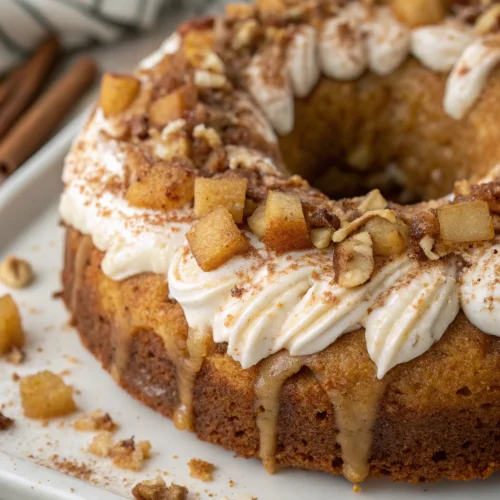
Apple Cider Doughnut Cake
Equipment
- 10-inch Bundt Pan
- Electric Mixer
- Small Saucepan
- Cooling Rack
Ingredients
For the Cake
- 2 cups apple cider reduced to ½ cup
- 2½ cups all-purpose flour substitute 1 cup with whole wheat for a nuttier taste
- 1½ teaspoons baking powder
- ½ teaspoon baking soda
- 1 teaspoon ground cinnamon Ceylon cinnamon preferred for delicate flavor
- ½ teaspoon ground nutmeg freshly grated if possible
- ¼ teaspoon ground allspice
- ½ teaspoon salt
- ½ cup unsalted butter softened (or substitute with ½ cup applesauce for less fat)
- ¾ cup granulated sugar
- ½ cup packed light brown sugar
- 3 large eggs room temperature
- ¼ cup buttermilk or ¼ cup milk with ¾ teaspoon lemon juice
- 2 teaspoons pure vanilla extract
- 1 medium apple peeled and grated (Honeycrisp or Granny Smith work well)
For the Cinnamon-Sugar Coating
- 4 tablespoons unsalted butter melted
- ¾ cup granulated sugar
- 1½ teaspoons ground cinnamon
Instructions
- Pour 2 cups of apple cider into a small saucepan and bring to a simmer over medium heat. Allow to reduce to ½ cup (about 15-20 minutes). The liquid will become darker, more concentrated, and syrupy. Cool completely before using.
- Preheat your oven to 350°F (175°C). Generously grease a 10-inch bundt pan with butter or cooking spray, ensuring you reach all crevices. Dust the greased pan with flour and tap out the excess.
- In a medium bowl, whisk together the flour, baking powder, baking soda, cinnamon, nutmeg, allspice, and salt.
- In a large bowl using an electric mixer, beat the butter and both sugars on medium-high speed until light and fluffy, about 3-4 minutes.
- Add the eggs one at a time, beating well after each addition. Mix in the cooled reduced cider, buttermilk, and vanilla extract until just combined.
- Gradually fold in the dry ingredients, mixing on low speed until just combined. Be careful not to overmix. Gently fold in the grated apple.
- Pour the batter into the prepared bundt pan and smooth the top. Bake for 45-50 minutes, or until a toothpick inserted in the center comes out clean with just a few moist crumbs.
- Allow the cake to cool in the pan for 10 minutes, then invert onto a cooling rack.
- While still warm (but not hot), brush the entire cake with melted butter. In a shallow dish, mix the granulated sugar and cinnamon, then generously coat the buttered cake, pressing gently to adhere.

